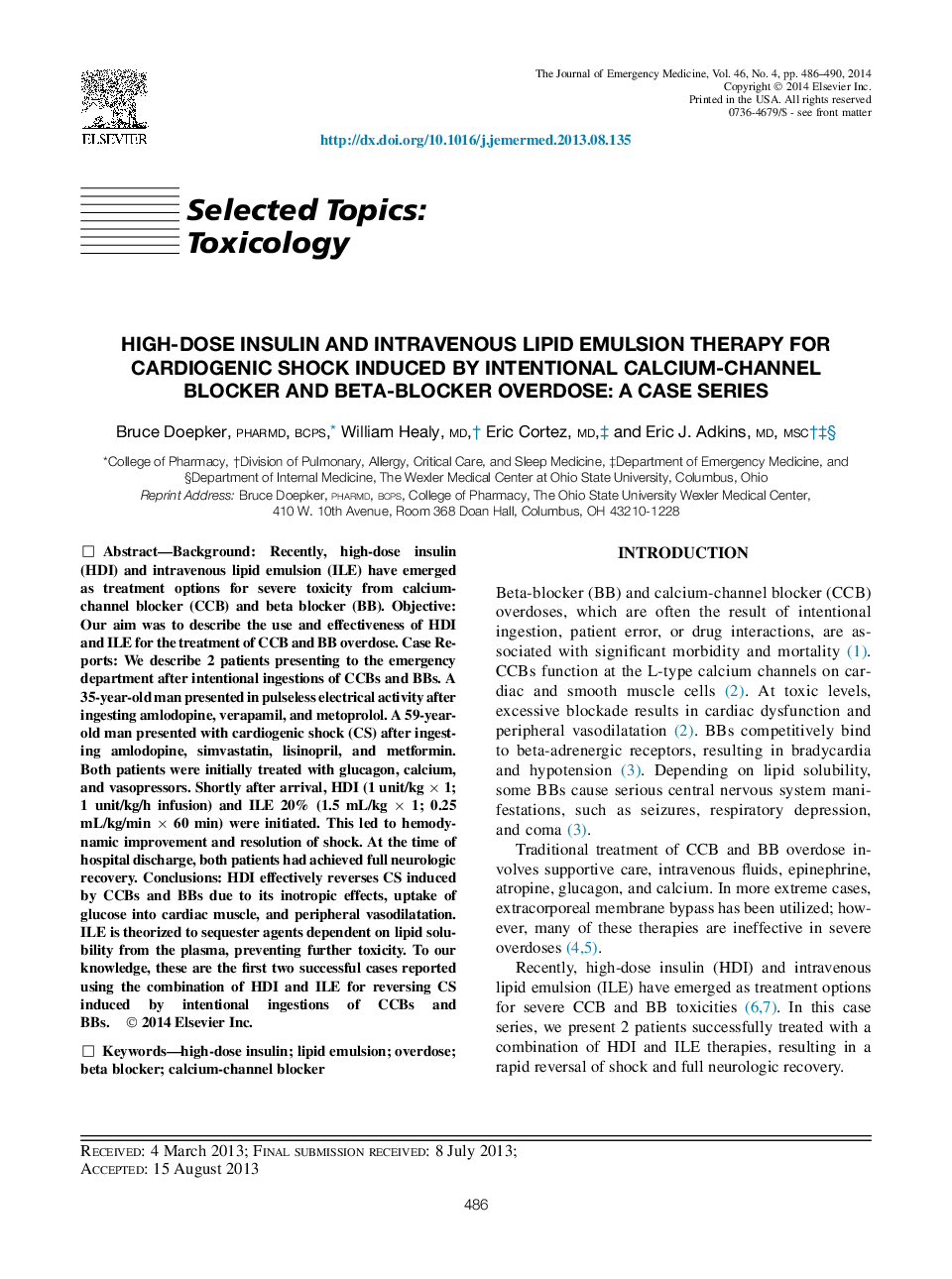| Article ID | Journal | Published Year | Pages | File Type |
|---|---|---|---|---|
| 3247408 | The Journal of Emergency Medicine | 2014 | 5 Pages |
BackgroundRecently, high-dose insulin (HDI) and intravenous lipid emulsion (ILE) have emerged as treatment options for severe toxicity from calcium-channel blocker (CCB) and beta blocker (BB).ObjectiveOur aim was to describe the use and effectiveness of HDI and ILE for the treatment of CCB and BB overdose.Case ReportsWe describe 2 patients presenting to the emergency department after intentional ingestions of CCBs and BBs. A 35-year-old man presented in pulseless electrical activity after ingesting amlodopine, verapamil, and metoprolol. A 59-year-old man presented with cardiogenic shock (CS) after ingesting amlodopine, simvastatin, lisinopril, and metformin. Both patients were initially treated with glucagon, calcium, and vasopressors. Shortly after arrival, HDI (1 unit/kg × 1; 1 unit/kg/h infusion) and ILE 20% (1.5 mL/kg × 1; 0.25 mL/kg/min × 60 min) were initiated. This led to hemodynamic improvement and resolution of shock. At the time of hospital discharge, both patients had achieved full neurologic recovery.ConclusionsHDI effectively reverses CS induced by CCBs and BBs due to its inotropic effects, uptake of glucose into cardiac muscle, and peripheral vasodilatation. ILE is theorized to sequester agents dependent on lipid solubility from the plasma, preventing further toxicity. To our knowledge, these are the first two successful cases reported using the combination of HDI and ILE for reversing CS induced by intentional ingestions of CCBs and BBs.
